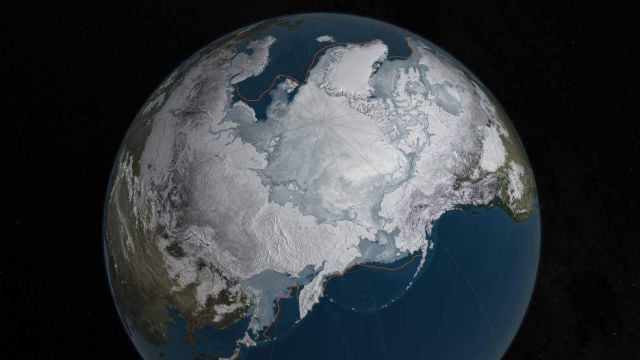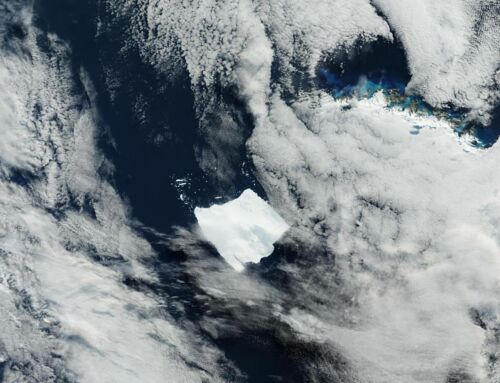Arctic sea ice appears to have reached a record low wintertime maximum extent, for the second year in a row. Watch the video…
According to scientists at the NASA-supported National Snow and Ice Data Center (NSIDC), Arctic sea ice was at a record low wintertime maximum extent for the second straight year.
Image credit NASA Goddard’s Scientific Visualization Studio/C. Starr
At 5.607 million square miles, it is the lowest maximum extent in the satellite record, and 431,000 square miles below the 1981 to 2010 average maximum extent.
The new record low follows record high temperatures in December, January and February around the globe and in the Arctic. The atmospheric warmth probably contributed to this lowest maximum extent, with air temperatures up to 10 degrees Fahrenheit above average at the edges of the ice pack where sea ice is thin, said Walt Meier, a sea ice scientist at NASA’s Goddard Space Flight Center in Greenbelt, Maryland.
The wind patterns in the Arctic during January and February were also unfavorable to ice growth because they brought warm air from the south and prevented expansion of the ice cover. But ultimately, what will likely play a bigger role in the future trend of Arctic maximum extents is warming ocean waters, Meier said.
“It is likely that we’re going to keep seeing smaller wintertime maximums in the future because in addition to a warmer atmosphere, the ocean has also warmed up. That warmer ocean will not let the ice edge expand as far south as it used to,” Meier said. “Although the maximum reach of the sea ice can vary a lot each year depending on winter weather conditions, we’re seeing a significant downward trend, and that’s ultimately related to the warming atmosphere and oceans.” Since 1979, that trend has led to a loss of 620,000 square miles of winter sea ice cover, an area more than twice the size of Texas.
source NASA






Leave A Comment